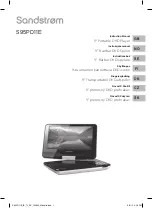
MG3702xA MM
PN: 10370-10372 Rev. B
2-1
Chapter 2 — Functional Description
2-1
Introduction
This chapter provides brief functional descriptions of the major subsystems that are contained in each model of
the MG3702xA. In addition, the operation of the frequency synthesis, automatic level control (ALC), and RF
deck subsystems is described so that the instrument operator may better understand the overall operation of
the MG3702xA. Block diagrams are included to supplement the written descriptions.
2-2
Major Subsystems
The MG3702xA circuitry consists of various distinct subsystems that are contained on one or more printed
circuit board (PCB) assemblies or in microwave components located on the RF deck. The following
paragraphs identify the subsystems that make up the instrument and provide a brief description of each.
shows a two page functional block diagram of a typical MG3702xA synthesizer with
applicable options.
Microprocessor and Digital Section
CPU Module (A2 PCB)
The MG3702xA Processor Board (A2 assembly) shown in
is the CPU and
communications hub of the synthesizer. It contains an Intel Celeron ™ processor PCB utilizing the
Windows XP ™ operating system supporting a touch screen display, instrument keypad, several
standard communication ports and a hard disk drive.
The hard disk drive holds the Windows ™ operating software, the instrument operating software, and
the factory calibration files. The hard drive has the same functional capabilities as a standard hard drive
on a Windows-based PC.
The A2 PCB provides other functionality including processing temperature, voltage and current
monitoring, transient protection, processor (RTC) battery, power monitoring, debugging ports, address
and data buffering, JTAG and other programmable logic control.
The A2 PCB utilizes a PCI-type interface (IEEE1386 PMC) for communication among three on-board
modules: DSP controller, GPIB and USB controllers.
The DSP controller interfaces to the system modules using the PMC interface standard. There are 4M x
32 bits of SDRAM available for DSP memory. Also available is a flash memory device with 512 KB of
main memory and 32 KB of secondary memory. The flash is provided for non-volatile storage
requirements and the SDRAM is used for all other DSP memory requirements, including DSP firmware
which is downloaded via the PCI bus at power on.
The PMC-GPIB section allows the instrument to interface to an external computer via GPIB. This
section interfaces to the system via the PCI bus using the PMC interface standard. This module is not
capable of being a GPIB controller.
The PMC-USB section allows the instrument to appear as a USB device to an external computer,
allowing the synthesizer to be controlled in that manner.
FPGA / Synthesizer Digital Control Module (A8 PCB)
The FPGA (Field Programmable Gate Array) / Synthesizer Digital Control PCB (also in
provides interface between the CPU and the RF synthesis hardware (A7 and A9 PCBs). The FPGA
programs the synthesis hardware for desired frequency output.
Summary of Contents for MG3702xA Series
Page 4: ......
Page 5: ......
Page 8: ...TG 8 PN 10370 10372 Rev B MG3702xA MM ...
Page 24: ...1 12 Test Equipment List Chapter 1 General Information 1 10 PN 10370 10372 Rev B MG3702xA MM ...
Page 42: ...2 5 RF Deck Assemblies Chapter 2 Functional Description 2 18 PN 10370 10372 Rev B MG3702xA MM ...
Page 120: ...5 5 Troubleshooting Tables Chapter 5 Troubleshooting 5 24 PN 10370 10372 Rev B MG3702xA MM ...
Page 182: ...Index 4 PN 10370 10372 Rev B MG3702xA MM ...
Page 183: ......
















































